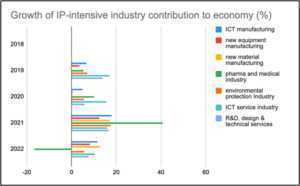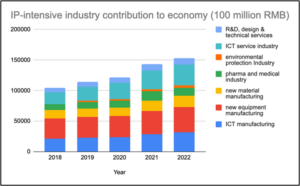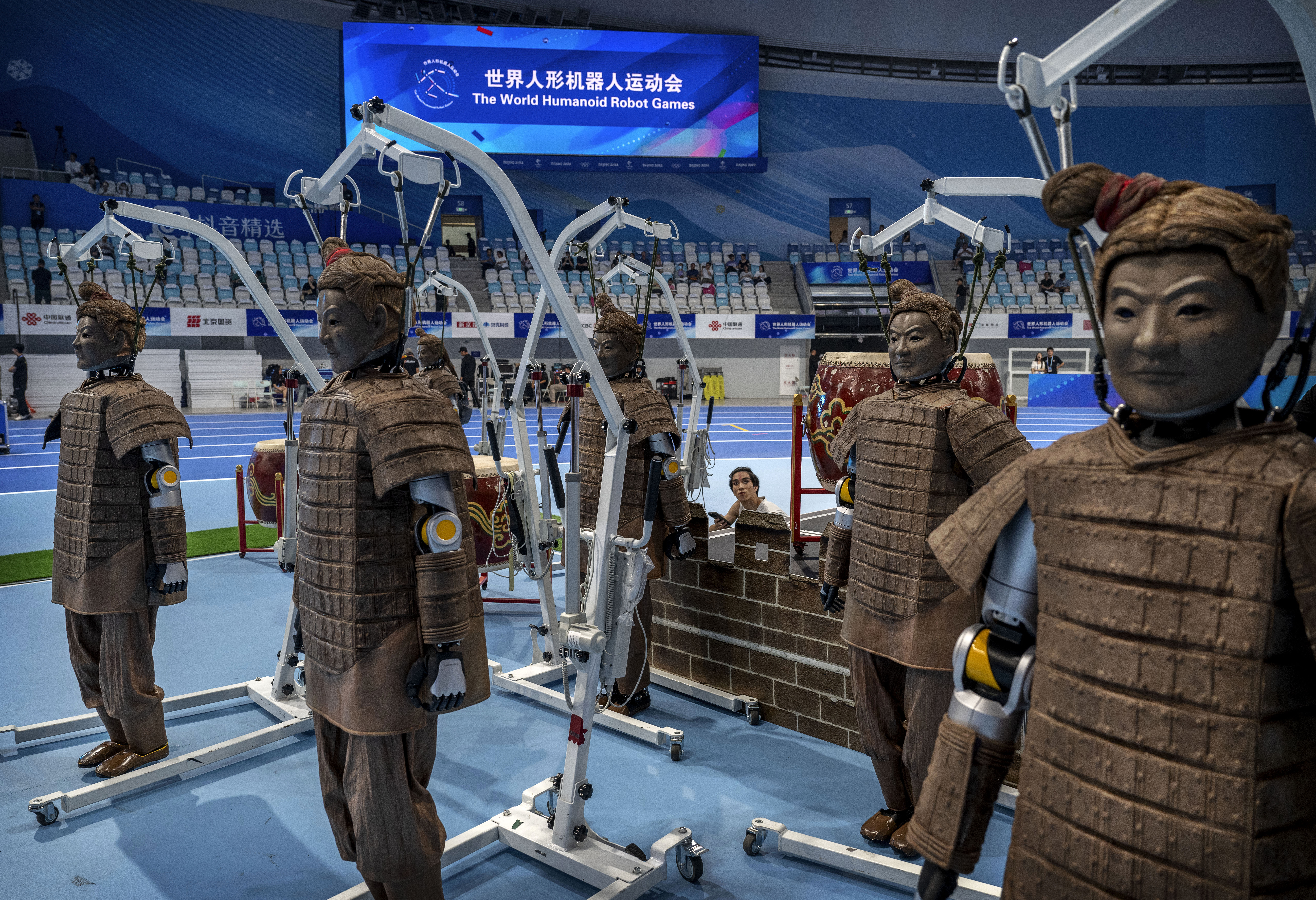
Graphene Among New Materials Intended to Unlock New Productive Forces
Graphene Among New Materials Intended to Unlock New Productive Forces
Executive Summary:
- Graphene is one of the most promising candidates to boost the new materials sector, which has been the focus of high-level strategic planning in the People’s Republic of China (PRC) for some time. The material’s unique properties make it suitable for applications in the critical aeronautics and electronics sectors.
- In 2016, the Chinese Communist Party (CCP) established a leading small group dedicated to the new materials industry. Such a cross-ministerial steering body is only rarely dedicated to just a single economic sector.
- Last year, the Chinese Ministry of Industry and Information Technology released a list of 15 new materials, including graphene, that the Chinese government hopes will create new sources of economic growth. These have been folded into the recent drive for “new productive forces,” aimed at finding new sources of economic dynamism.
- A prominent graphene researcher, Liu Zhongfan, shows how experts can be adept at linking their research to strategic goals, while also advising caution about the potential for quick and easy answers to complex economic issues.
In official economic discourse in the People’s Republic of China (PRC), the so-called “new productive forces (新质生产力)” are all the rage. The term was inaugurated by President Xi Jinping last September on a visit to Heilongjiang, a province in the country’s northeastern rustbelt (Xinhua, September 10, 2023). The Party’s leaders hope that the innovative industries of the future will lift a sagging economy. One of the more extensive treatments of the new productive forces has come in a special six-part series of articles launched by the Chinese Communist Party (CCP) mouthpiece the People’s Daily, entitled “Science & Technology Perspectives—Approaching New Productive Forces (科技视点·走近新质生产力).”
The first in this series was on the PRC’s new materials industry (People’s Daily, February 26). These refer to materials with new chemical formulations that lead to improved product performance or manufacturing efficiency. New materials are seen as crucial in the country’s broader scientific and technological developments, as advances in this field underpin everything from artificial intelligence to quantum computing to synthetic biology. As many of the PRC’s policy documents indicate, these are the areas which they believe will help the country achieve its broader strategic goals.
New Materials as a Long-Term Strategic Priority
The first article in the People’s Daily series details some of the expectations for new materials. It cites Gan Yong (干勇), director of the National New Materials Industry Development Expert Advisory Committee (国家新材料产业发展专家咨询委员会), a body composed of scientists and industry representatives that first convened in 2017 (Xinhua, February 28, 2017). He is quoted as saying that “the wide application of new materials technology in industries such as next generation information technology, new energy, equipment manufacturing, aerospace, rail transport, marine engineering, and healthcare demonstrates the good market opportunities and development prospects of the new materials industry” (People’s Daily, February 26). The article lists a host of promising new materials, including superconductivity materials, materials used for 3D printing technology, as well as carbon nanotubes and graphene, which have led to improved performance of electronic devices.
The subsequent articles in the series highlighted other promising industries, including aerospace (People’s Daily, March 12), energy storage (People’s Daily, March 18), drug development (People’s Daily, March 25), and bio-manufacturing (People’s Daily, April 1). The sixth and final instalment, which ran in early April, discussed the possible applications of brain–computer interfaces as a source of “new productive forces” (People’s Daily, April 8). Mention of the digital economy was notably absent, though in Xi’s speeches it has not disappeared entirely.
Already in 2016, the PRC leadership had set up a “Leading Small Group for the Development of the New Materials Sector.” This high-level body was entrusted with broad cross-ministerial coordination capabilities usually reserved for only the highest political priorities—and rarely dedicated to just one industrial sector (State Council, December 28, 2016). This body was set up with then-Vice Premier Ma Kai (马凯) as leader and then-Minister of Industry and Information Technology Miao Wei (苗圩) as his deputy.
Materials science has been a focal point in key planning documents, as work by scholars at University of California, San Diego’s Institute on Global Conflict and Cooperation identifies (UCGICC, July, 2022). The 13th Five-Year Plan notes six new materials-based technologies. Meanwhile, new materials are listed in the 13th Five-Year National Science, Technology and Innovation Plan as one of 15 “science, technology, and innovation 2030 Megaprojects (科技创新2030-重大项目)” (Gov.cn, August 8, 2016). Between 2012 and 2016, new materials also moved from sixth to third in the PRC’s ranked priority list of Strategic Emerging Industries (SEI). The current (14th) five-year plan lists “high-end new materials (高端新材料)” as the first of eight core manufacturing capabilities to increase (see Table 4 in Gov.cn, March 13, 2021). These include rare earth functional materials (required for semiconductor production) and high-performance alloys (used in advanced aeronautical equipment).
The fact that new materials led the group of People’s Daily articles discussing new productive forces should not be a surprise. They hold the promise of helping the PRC enhance its comprehensive national power and achieve greater so-called technological self-reliance. A Xi Jinping text from 2022 titled “Accelerating the Construction of a Modern Industrial System (加快建设现代化产业体系)” is pertinent here. In it, he emphasizes the importance of focusing on the real economy in order to bring about, among other things “a strong country (强国)” (Xinhua, May, 28, 2023). New materials is listed as one of seven areas that are seen as future growth engines that will “improve social productivity and comprehensive national strength (提高社会生产力和综合国力).” To Xi, this is crucial, stating that “competition for comprehensive national power in today’s world is, in the final analysis, a competition for scientific and technological strength (今世界的综合国力竞争,说到底是科技实力竞争).”
Increased Emphasis on Graphene
In the summer of last year, the Ministry of Industry and Information Technology (MIIT) and the State-owned Assets Supervision and Administration Commission (SASAC) took another step by releasing the first batch of items in a catalog of “cutting-edge materials” which the government hopes will drive growth (MIIT & SASAC, August 30, 2023). The list contains 15 new materials, including a number of superconductors, 3D printing materials, carbon nanotubes, specialized alloys, and graphene (石墨烯). When the MIIT list was released, the group of materials were hailed as being the basis of future “growth engines (增长引擎).” In the months following the release of the list, new materials, like graphene, were reframed as part of Xi’s “new productive forces.”
Graphene is an excellent conductor of electricity and is incredibly strong, which makes it useful in reinforcing other materials. These special properties were recognized instantly when the material was first isolated in 2004 by Andre Geim and Kostya Novoselov, earning the scientists the Nobel Prize in 2010. One of the main ways of producing graphene is through chemical vapor deposition, whereby a chamber is filled with a vapor version of the chemical and attached to a heated surface or substrate to which the graphene then adheres. It has a number of valuable applications in semiconductors as a replacement for (or in conjunction with) silicon (The Global Times, January 15). Its lightness and anti-corrosive and hardening properties make graphene an ideal material for use in aeronautics. Xi has previously highlighted a desire to become “a strong aerospace country (航天强国),” something which this emphasis on graphene will likely help to achieve (Xinhua, May, 28, 2023).
The PRC’s graphene sector—as well as its new materials sector writ large—has many things going for it. From 2012 to 2022, the country’s new materials industry grew nearly six fold. As of October 2023, the PRC was home to 20,000 new materials companies, of which 1,972 of them were so-called “Little Giants”—promising SMEs that receive preferential treatment from the government. Some of these companies collected around seven national advanced manufacturing clusters (People’s Daily, February 26).
These developments follow a burst of policymaking during Xi’s first term. Graphene was referenced in the Made in China 2025 plan and concurrently thought on the matter was shaped by a document titled “Certain opinions on accelerating the innovation and development of the graphene industry (关于加快石墨烯产业创新发展的若干意见)” (CAAM, November 20, 2015). The uptick in policy documents discussing the substance around the year 2016 has persisted ever since. New materials are addressed third in a recent 2023–2035 industry pilot standardization plan, for instance (MIIT, August 3, 2023).
A 2021 analysis conducted by the Consultative Group of the Chinese Academy of Sciences (CAS) proposes recommendations for the PRC’s graphene industry (Bulletin of the Chinese Academy of Sciences, February 2022). It argued that the industry lacked clear national, top-down guidance, and was dominated by small players, with inadequate synergy between researchers and industry. The report therefore proposed the establishment of a National Graphene Innovation Center to help integrate pure research with commercial applications. Such a center was set up the following year in Ningbo, Zhejiang (National Graphene Innovation Center, November 2022).
‘Graphene Craze’ Tempered by Lack of Results
One of the report’s consultative group co-leaders is Liu Zhongfan (刘忠范), a widely respected graphene researcher. Having done his graduate work in Japan, he rose to become a professor at Peking University, and was the founding head of the Beijing Graphene Institute when it opened its doors in 2018. He is also an academician at CAS. It is in this latter capacity that he contributed to the industry report. He regularly speaks about and promotes graphene and its prospects for unlocking the industries of the future. However, he also regularly warns about exaggerating hopes for the material’s prospects and that any productive outcome would be the result of slow, steady, and hard-won research.
In 2017, Liu gave a talk on graphene research and expressed his concerns about excessively high expectations. “There are even ‘graphene underwear’ and ‘graphene belts’ on the market now. We can’t just rush into the graphene industry as if it was ‘The Great Leap Forward,’” he was quoted as saying, while pointing at an image of a steel furnace on the screen. The audience, understanding the reference to Mao Zedong’s ill-fated economic campaign of the late 1950s and early 1960s, chuckled, according to a report in the S&T Daily (S&T Daily, January 17, 2017). Indeed, in the early to mid-2010s, patent filings for graphene-related inventions surged in the PRC. At the time, however, official media cited experts questioning the value of these patents, given that that only a tiny fraction of them were filed internationally, which suggested they were of dubious merit (China Daily, July 27, 2016).
In 2021, Liu warned again about an out of control “graphene craze (石墨烯热),” noting that the 30th Graphene Industrial Park had been opened recently in Shenzhen. Again he complained that “So far, our graphene industry has focused more on specific products and how to make quick money” (S&T Daily, April 28, 2021). He also advised that “scientific researchers, especially young scientists, must calm down and produce something of real value … there is no need to rush.” Last month, he said that “if silicon was the strategic new material in the 20th century, then graphene should be the strategic new material in the 21st” (Sina.cn, April 12). Seizing on another slogan, he warned that if the PRC did not move away from its fixation on quick wins, it would continue to suffer from the “chokehold (卡脖子)” problem in hard technologies (Security Times, April 10).
Liu’s point about dependencies on foreign tech imports, focusing specifically on those originating from the U.S., aligns with current national strategic concerns. By using a term like “chokeholds”—generally used to describe the PRC’s dependence on high-performance computer chips currently subject to U.S. export controls—he is suggesting that if the PRC does not invest in graphene research today then at some point in the future the United States might develop graphene-based products that it could similarly deny the PRC through the imposition of further export bans.
Liu Zhongfan is clearly skilled at forging connections between his work and the evolving considerations of the Party. He serves as a Standing Member of the National Committee of the Chinese People’s Political Consultative Conference (CPPCC) (21st Century Business Herald, March 12). In March, he weighed in on the CPPCC’s deliberations during its annual session, at which “new productive forces” were discussed. It is in this capacity he promoted graphene’s prospects as a new productive force (Security Times, March 16).
By its own measures, the PRC’s new materials sector struggled for a long time. A new statistical category tracking “patent or IP [intellectual property]-intensive industries” provides some insight into the challenges. “New materials manufacturing” is the fourth-largest IP-intensive contributor to the PRC economy, following new equipment manufacturing, ICT [information and communications technology] services, and ICT manufacturing, respectively (see the yellow section in Figure 1). The medical and pharmaceutical industries come in fifth. Moreover, in 2019, the new materials sector shrank, and experienced only miniscule growth in 2020. It was only in 2021 that the sector matched the levels of growth seen in other sectors (see the yellow section in Figure 2) (National Bureau of Statistics, 2018, 2019, 2020, 2021). This late arrival on the scene may reflect the fact that special policy focus on the sector, especially the establishment of a Leading Small Group, only began in the mid-2010s and did not bear fruit until several years later.


Conclusion
High-profile scientists like Liu Zhongfan have become adept at linking their work to shifting political imperatives, such as connecting long-simmering anxieties about dependence on the United States for high-tech imports with supporting campaigns to boost the PRC’s economy. Liu does this by simply grafting his own research priorities onto watchwords of the political zeitgeist such as “chokepoints,” “chokeholds,” or “new productive forces.” In his role as the co-leader of a Chinese Academy of Sciences consultative group he was able to contribute to high-level policy recommendations, and in his role as a member of the national CPPCC, he has one more access point to promote the importance of graphene. By leveraging these various roles, he can ensure that graphene remains front of mind in the CCP’s deliberations in science and technology policymaking.
Liu reveals a more cautious stance about hopes for graphene as a source of economic growth by regularly emphasizing the gradual nature of research and of subsequently developing industrial applications for the material. Such voices will be important given the enormous amount of political attention, bureaucratic energy, and public visibility accorded to new materials. While graphene enjoys a particular focus, its ability to perform the functions that the PRC government desires remains uncertain. Nevertheless, it is clear that graphene, and new materials more broadly, will continue to be prioritized by the PRC—as long as they remain integral to the country’s national strategy.


